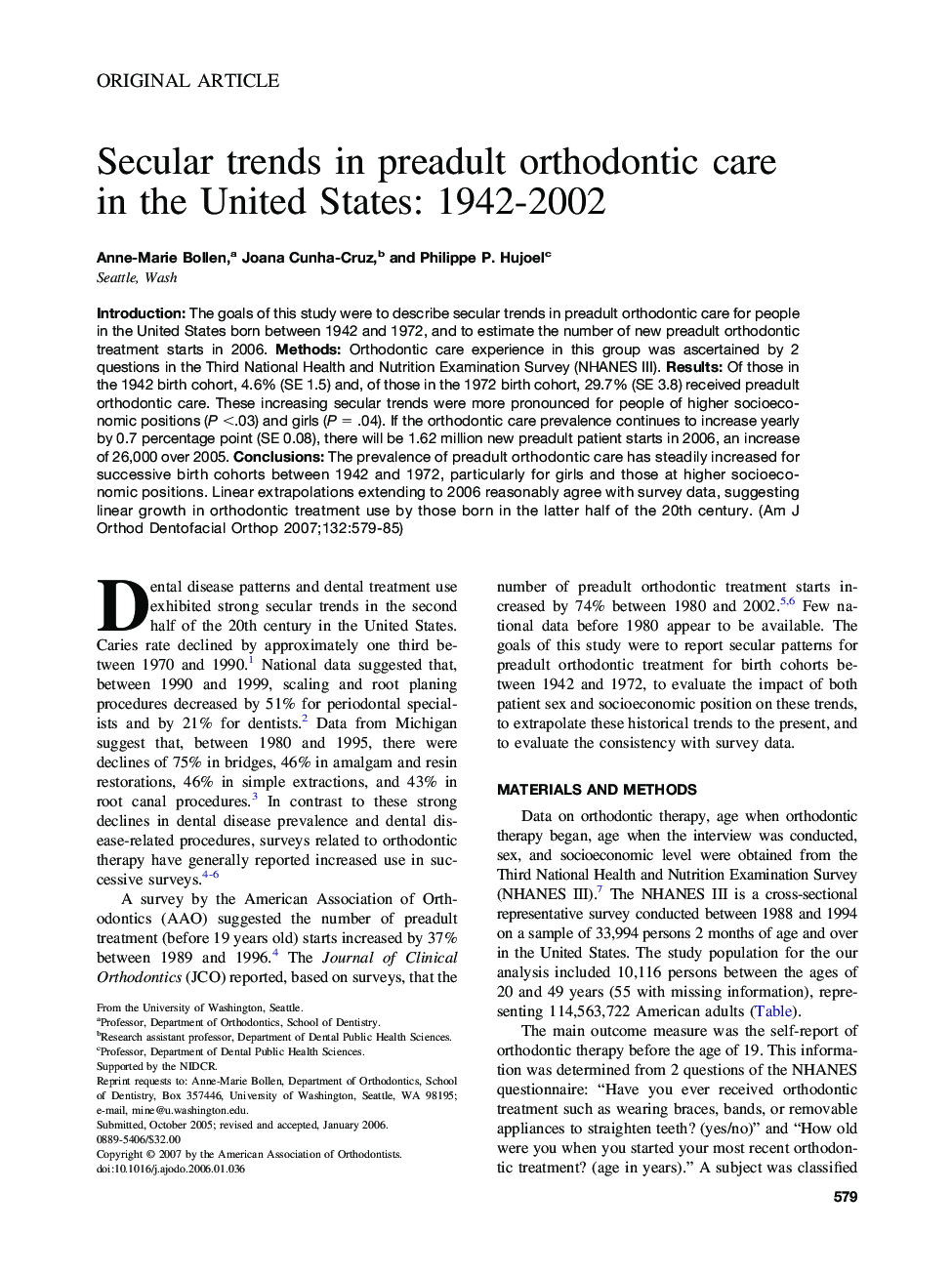| Article ID | Journal | Published Year | Pages | File Type |
|---|---|---|---|---|
| 3119663 | American Journal of Orthodontics and Dentofacial Orthopedics | 2007 | 7 Pages |
Introduction: The goals of this study were to describe secular trends in preadult orthodontic care for people in the United States born between 1942 and 1972, and to estimate the number of new preadult orthodontic treatment starts in 2006. Methods: Orthodontic care experience in this group was ascertained by 2 questions in the Third National Health and Nutrition Examination Survey (NHANES III). Results: Of those in the 1942 birth cohort, 4.6% (SE 1.5) and, of those in the 1972 birth cohort, 29.7% (SE 3.8) received preadult orthodontic care. These increasing secular trends were more pronounced for people of higher socioeconomic positions (P <.03) and girls (P = .04). If the orthodontic care prevalence continues to increase yearly by 0.7 percentage point (SE 0.08), there will be 1.62 million new preadult patient starts in 2006, an increase of 26,000 over 2005. Conclusions: The prevalence of preadult orthodontic care has steadily increased for successive birth cohorts between 1942 and 1972, particularly for girls and those at higher socioeconomic positions. Linear extrapolations extending to 2006 reasonably agree with survey data, suggesting linear growth in orthodontic treatment use by those born in the latter half of the 20th century.
